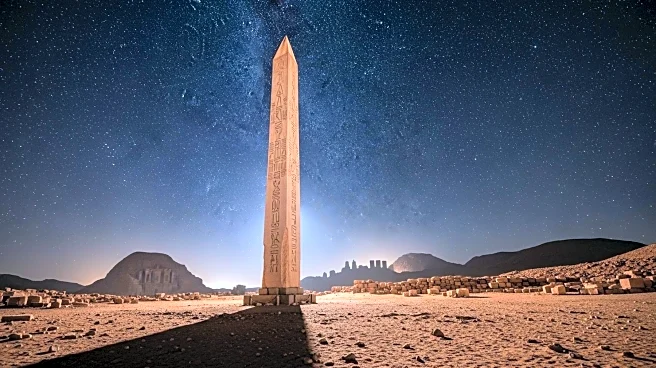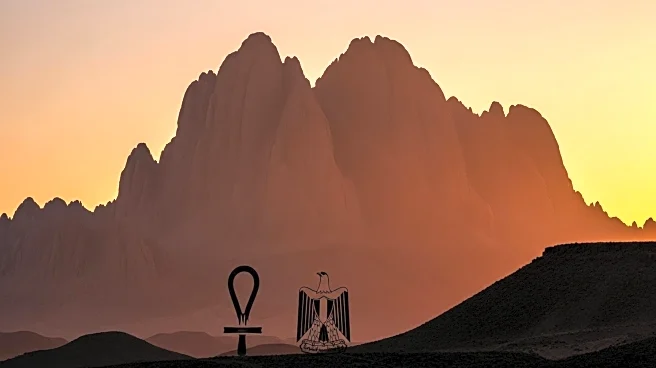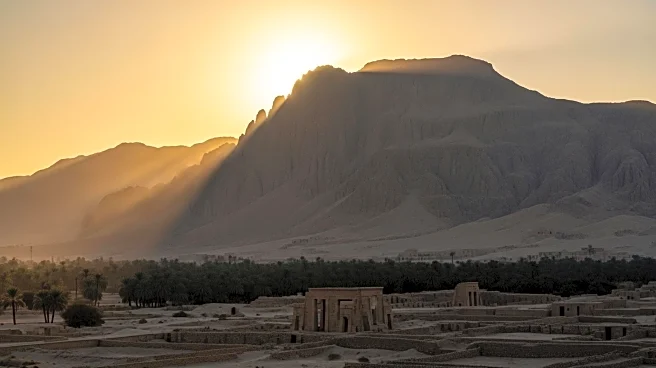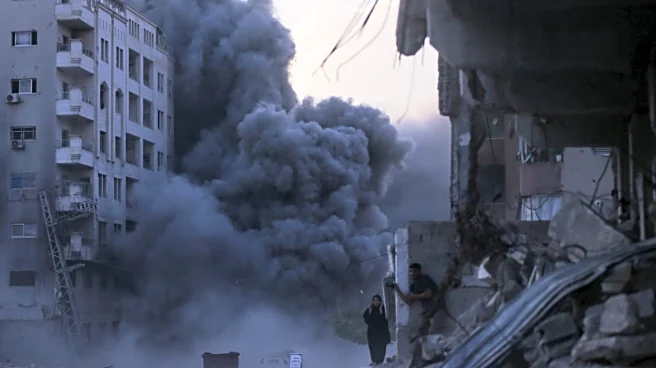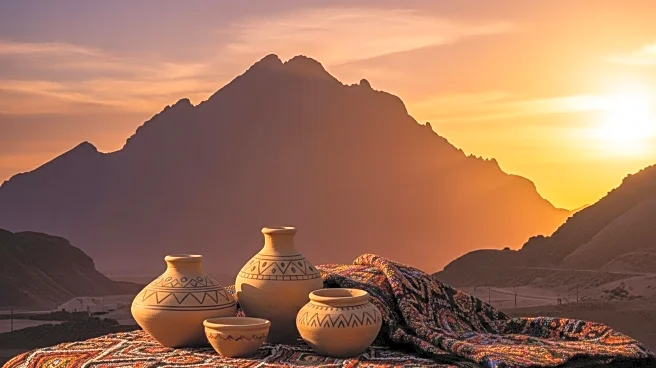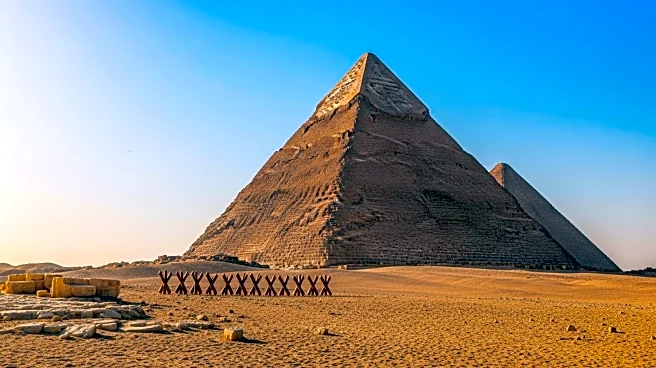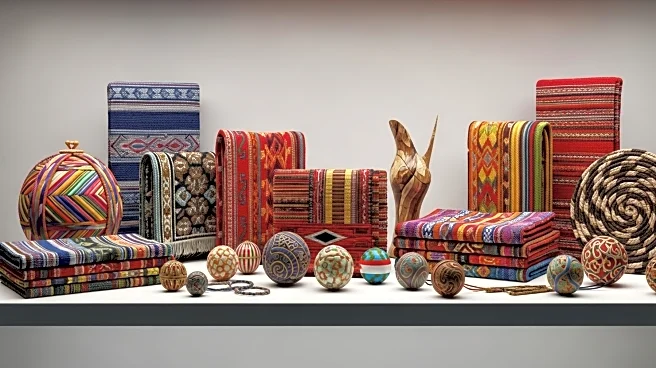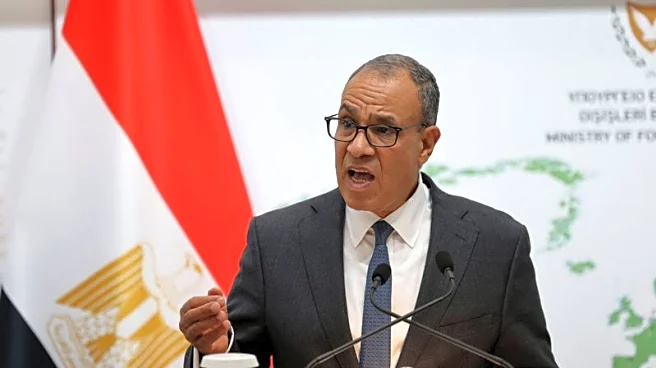What's Happening?
Egypt's ambitious Great Transfiguration Project, initiated by President El-Sisi in 2020, aims to transform the southern Sinai Peninsula into a major tourist hub. This development includes luxury hotels, housing, leisure areas, and shopping complexes, with infrastructure such as roads, water supply, and a new airport planned to connect the area with popular resorts. However, this project has sparked concerns over the future of St Catherine's Monastery, the oldest continuously operating Christian monastery in the world. Legal disputes have arisen over land ownership, with a recent court ruling granting Egypt control over two-thirds of the monastery's land while allowing monks to continue worship and administration. Despite reassurances from Greek and Egyptian officials, fears persist that the monastery could be converted into a museum, ending its 15-century history as a religious site.
Why It's Important?
The development of the Great Transfiguration Project has significant implications for religious heritage and tourism in Egypt. St Catherine's Monastery, a UNESCO World Heritage Site, holds immense historical and cultural value, with its extensive collection of icons and manuscripts. The potential transformation of the monastery into a tourist attraction could impact the religious community and the Bedouin population relying on its resources. Additionally, the project highlights the tension between economic development and preservation of cultural heritage. The outcome of this situation could set a precedent for how religious sites are treated in the face of large-scale development projects, affecting stakeholders in tourism, religious communities, and cultural preservation.
What's Next?
The future of St Catherine's Monastery remains uncertain as the Great Transfiguration Project progresses. Stakeholders, including religious leaders and cultural preservationists, may continue to advocate for the protection of the monastery's religious status. The Egyptian government could face pressure to balance development goals with cultural and religious preservation. Further legal challenges or negotiations may arise as the project advances, potentially influencing policy decisions regarding heritage sites. The international community, particularly UNESCO, may also play a role in monitoring the situation and advocating for the monastery's preservation.
Beyond the Headlines
The situation surrounding St Catherine's Monastery raises broader questions about the intersection of development and cultural heritage. It highlights the ethical considerations of prioritizing economic growth over historical preservation. The potential conversion of religious sites into tourist attractions could lead to cultural homogenization, impacting local traditions and identities. This development also underscores the importance of international cooperation in preserving global heritage, as seen in the involvement of Greek and Egyptian officials. The outcome may influence future policies on heritage site management and the role of international organizations in safeguarding cultural landmarks.
